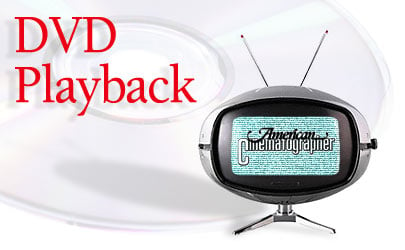|
 |
|||||||||||||||||||||||||||||||||||||||||||||||
 |
||||||||||||||||||||||||||||||||||||||||||||||||
| Lifeboat (1944) | ||||||||||||||||||||||||||||||||||||||||||||||||
| 1.33:1 (Full Frame) Dolby Digital 2.0 20th Century Fox Home Video, $19.95 | ||||||||||||||||||||||||||||||||||||||||||||||||
|
Alfred Hitchcock was never one to back away from a technical or logistical challenge, but on the 1944 production Lifeboat, he faced a problem that was particularly daunting. The film has just one extremely small location — the titular lifeboat — and nine characters, so the question for Hitchcock and his collaborators was how to make such a limited canvas visually and dramatically compelling. A screenplay by acclaimed writers John Steinbeck and Jo Swerling certainly helped generate tension, but what really gives the film its energy is an innovative visual approach, which brought Oscar nominations to both Hitchcock and his cinematographer, Glen MacWilliams, ASC. Lifeboat’s premise allows for a classic Hitchcockian moral exploration: the eight survivors of a German bombing are stranded in a lifeboat, where they pick up a ninth passenger, a stranded Nazi. Within the confined setting, MacWilliams rarely repeats compositions or angles, which is one of the reasons the movie doesn’t feel stilted or theatrical. Another is the picture’s sophisticated manipulation of point of view, as Hitchcock and MacWilliams (who had previously collaborated on Waltzes From Vienna) employ subtle changes in lighting and camera placement that shift the viewer’s identification from one character to another. Although Lifeboat is a wartime thriller and Hitchcock was fiercely loyal to Britain and the United States, the complexity of the screenplay and the artistry on display prevent the film from becoming didactic. MacWilliams’ black-and-white cinematography is stylish yet extremely functional; whenever he uses light to express character or theme, the light is practically motivated rather than purely self-conscious. In one shot, for example, a shadow passes over the duplicitous German’s face, emphasizing his dual nature, and it is caused by a realistic source: a sail blowing in the wind. Images like this abound in Lifeboat, and light, camera movement and content become inextricably bound to one another. 20th Century Fox’s new DVD captures many of these images beautifully, though the disc is far from perfect. Scratches and other artifacts in the source material are particularly evident in the opening scenes, and there are minor picture flaws throughout the movie. Nevertheless, there are many striking passages in which the richness of MacWilliams’ photography is impeccably captured, particularly in scenes where he uses extreme contrast to convey the moral ambiguity of the characters. The use of sound in Lifeboat is every bit as impressive as the visuals, and in some ways extremely audacious for a Hollywood studio film of that era. The filmmakers eschewed a traditional score in favor of a dense combination of overlapping dialogue, ambient noise, and silence — in fact, some of the most dramatic moments in the picture are distinguished by a nearly total lack of sound. The DVD’s monaural soundtrack preserves the intricate sound design with clarity and precision, and an equally strong stereo mix is featured as well. An outstanding audio commentary is provided by film-studies professor Drew Casper, who combines biography, historical context and aesthetic analysis. Even avowed Hitchcock scholars will gain new insights and learn new facts from Casper’s thorough investigation of what he unhesitatingly calls one of Hitchcock’s masterworks. Casper’s insights are complemented and expanded upon by a 20-minute documentary, “The Theater of War,” in which he is interviewed along with Hitchcock’s daughter and granddaughter. The featurette is brief but informative, and allows viewers a look at the tank on the Fox lot where the entire film was shot. Steinbeck scholar Robert Demott provides a bit of background on Steinbeck’s role in the production. (Contemporary viewers may be surprised to learn that Lifeboat was not particularly popular at the time of its release because many misinterpreted its political stance.) A theatrical trailer and gallery of photos complete the supplements. |
||||||||||||||||||||||||||||||||||||||||||||||||
| ||||||||||||||||||||||||||||||||||||||||||||||||
|
<< previous || next >> |
||||||||||||||||||||||||||||||||||||||||||||||||


